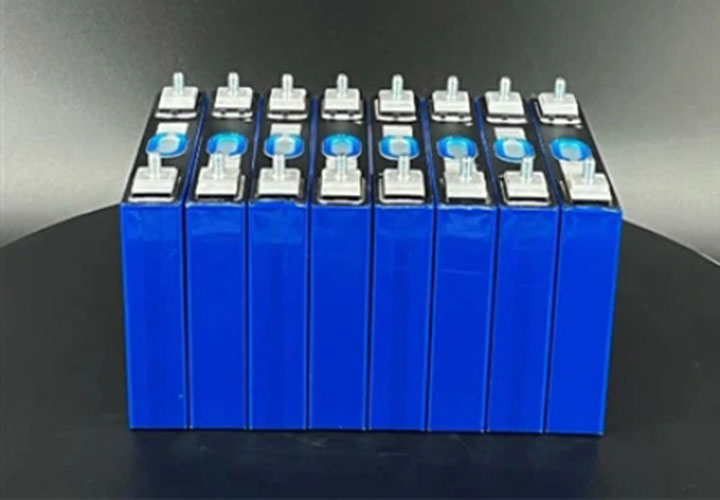Learn More >
The EU's New Battery Law: A Battery Renaissance?
In order to implement the concept of environmental protection and solve the problems of poor battery life caused by the loss of batteries in electronic products, users who want to replace batteries face difficulties, high costs, and serious waste, the European Union's "New Battery Law" stipulates that batteries for electronic products must be Detachable, easy to disassemble. The relevant market may open up a new situation, and at the same time, enterprises will also face many challenges such as design, production, and safety.
On June 14, local time, the European Parliament passed an agreement on the "New Battery Law" reached with the European Council in December 2022 with 587 votes in favor, 9 votes against, and 20 abstentions. It is improving the relevant regulations on EU battery management in the "New Battery Law". The relevant agreements of the bill still need to be formally approved by the European Council, and it is only a matter of time before its official release takes effect.
The "New Battery Law" regulates the design, production, maintenance and recycling of batteries, and puts forward requirements for restricted substances, carbon footprint, battery performance and durability, detachable and replaceable batteries, and safety. One of the highlights is the requirement for the detachability of the battery.
As early as 2018, Washington State of the United States proposed a plan to legislate on the maintainability of electronic products, using Washington State as the first legislative pilot area and guiding the bill to be implemented nationwide. It is mentioned in the bill that in mobile phones and other devices, glue and other adhesives are used to stick the battery to the motherboard, which not only increases the difficulty of disassembly and maintenance, but also does not comply with the principles of low-carbon environmental protection and reuse. Therefore, changing the battery in an electronic device to be detachable and replaceable is to increase the maintainability of the electronic product.
Seemingly better
Electronic devices using sealed batteries have dominated the market in recent years, and more and more companies have given up the production of removable battery devices to cater to the market.
At present, most electronic devices such as mobile phones, tablets, and notebooks on the market use closed non-removable batteries. This type of battery can increase the aesthetics of the device, making the body thinner and more convenient to carry. Although the detachable replacement battery is much lighter than the power bank, the relatively thick body design is an unavoidable problem for detachable battery electronic devices.
Good hermeticity is an advantage of electronic devices with enclosed battery designs. With good waterproof performance, the device can be used in various occasions and environments. The closed battery design can reduce dust, moisture and other substances from entering the device during use, prevent the internal parts of the device from being corroded or oxidized, and reduce the external environment. impact and prolong the service life of the equipment. However, it is difficult to achieve both airtightness and waterproof performance for removable batteries.
In terms of safety, taking mobile phones as an example, mobile devices with closed batteries are generally equipped with corresponding battery protection measures, such as overcharge protection, temperature protection, etc., to deal with safety hazards such as battery overheating and short circuit, thereby reducing the accident rate. , Improve the safety of mobile phone use. When mobile phones with detachable batteries were popular before, the batteries overheated and spontaneously ignited or exploded frequently, causing injuries to people many times, which made people worry about their safety.
Not invulnerable
Take the iPhone product as an example. The iPhone has always won the favor of a large number of consumers with its thin and light body and simple design. All of its products use non-removable batteries without exception. In the face of advantages such as appearance and performance, the battery problem is also a part that consumers attach great importance to.
For many consumers who have bought iPhone products for a period of time, the use of mobile phones is still silky smooth, but it is inevitable to worry about the declining battery health. It is already tacit for many iPhone users to have a power bank when going out.
To change or not to change is the question. At the beginning of this year, Apple officially raised the service charge for out-of-warranty batteries for all iPhone models, with the highest increase being nearly 50%. The expensive repair and replacement costs have discouraged many users. Many consumers frankly say that such a low price/performance ratio is not as good as a direct replacement. While another part of users face high maintenance costs, they choose not to maintain and continue to use. What follows is that the health of the battery is getting lower and lower, the number of charging times is gradually increasing, and the service life of the mobile phone is reduced.
Similar issues exist with Samsung phones. Samsung’s official batteries are not allowed to be sold separately. If you want to replace the battery, you can only send it in for repair or on-site repair. This requires consumers to pay extra money and time, which is very inconvenient.
Not just Apple and Samsung, but battery issues are common to all devices with non-removable batteries. Thinner and lighter bodies have become the trend pursued by mobile phone manufacturers, but many manufacturers have adopted the method of compressing battery capacity to achieve "lightness" and "thinness".
In order to deal with the problem of low battery capacity, more and more brands have introduced various methods such as fast charging chargers and rechargeable mobile phone cases, but this will not only increase the extra expenditure of consumers, but also impose a burden on the environment.
problem to be solved
The implementation of the EU's "New Battery Law" has undoubtedly brought a lot of challenges to enterprises. Judging from the current market situation, there are still many problems to be solved in order to meet the requirements of the law and ensure exports.
Enterprise production problems. According to the public data of the three major operators, the number of mobile phone users in my country will be 1.619 billion in 2022. In the era when many users have 2-3 mobile phones per capita, mobile phone replacement is fast, and the frequency of user replacement will increase accordingly. However, the promulgation of the "New Battery Law" has made clear requirements for battery replaceability, which also means that the design and production direction of mobile phone manufacturers in the future must move closer to removable battery devices. At present, the existing industrial chains of most mobile phone manufacturers at home and abroad are developing towards carbon reduction. Once the production method is changed, it may bring about greater carbon emission problems.
Battery size issue. With the rapid development of electronic products, major brands at home and abroad are striving to innovate and produce products with both brand style and use value, which also makes the battery size and specifications of different brands of products different. The "New Battery Law" requires companies to design portable batteries in electrical appliances so that consumers can easily remove and replace the batteries themselves. If there is a situation where a brand does not sell batteries alone, it is necessary to think about whether to unify the size of batteries in the design process of future electronic products.
Charging power problem
The "New Battery Law" requires the design of removable batteries, which is like a "renaissance" in the battery industry. Will the "universal charger" that has disappeared from the public eye for many years return? Nowadays, most mobile phones, tablets and other electronic devices on the market support fast charging due to the existence of charging protection measures. The existence of fast charging also makes many users give up the choice of power banks. If the "universal charging" returns, can it also achieve the effect of fast charging on the basis of ensuring safety?
Battery safety issues. The safety of electronic products has always been the most concerned issue for consumers. In the past, there were many safety hazards and frequent accidents of replaceable batteries. If detachable batteries are popularized again, the matching battery charging measures, whether there are corresponding protection measures for voltage, temperature and short circuit problems are the most important.



